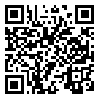Volume 6, Issue 2 (2014)
JHS 2014, 6(2): 1-32 |
Back to browse issues page
1- Associate Professor, Political Science Department, of Shahed University, Tehran, Iran.
2- Student of Sociology of Revolution, Shahed University, Tehran, Iran.
2- Student of Sociology of Revolution, Shahed University, Tehran, Iran.
Abstract: (9590 Views)
This paper examines the characteristics and vulnerabilities of the second Pahlavi and its role in the revolutionary mobilization. The main question of the paper is that: what are the characteristics and vulnerabilities of the Shah's government that led to the revolutionary mobilization? To answer this question, document analysis has been used that is a kind of qualitative research. By this method, documents including books, articles and dissertations have been investigated. Therefore, in this paper, the combination of state–centric theories including the theories of independence of state, capabilities of state, political opportunities of state, and construction of state were used to develop a model to explain the status of the Pahlavi state and also its vulnerabilities, and also its relation to revolutionary mobilization. The findings showed that the most important vulnerabilities of Pahlavi state include independence of the Pahlavi rentire state from the social classes, discapabilities of the state in policy making, bureaucratic weakness of the state institutions, state monopolies, and vulnerabilities resulting from modernization, and roforms, which in combination with each other led to the revolutionary mobilization.
Article Type: Research Paper |
Published: 2014/09/23
Published: 2014/09/23
| Rights and permissions | |
 |
This work is licensed under a Creative Commons Attribution-NonCommercial 4.0 International License. |


